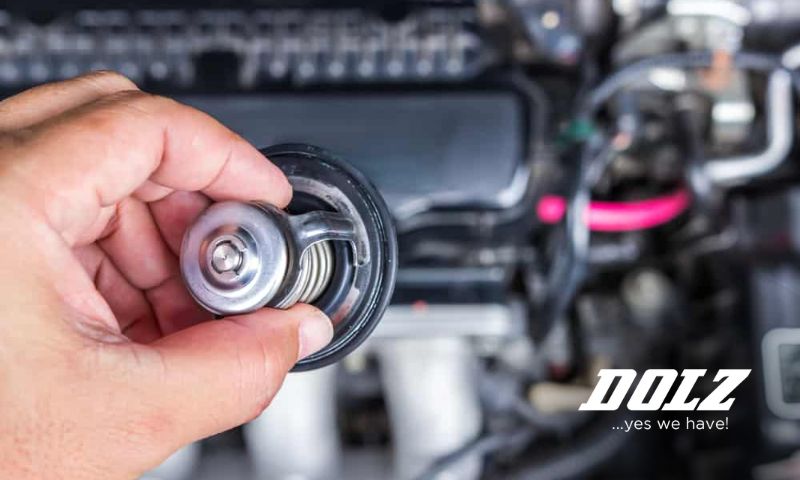The cooling system is supposed to manage excessive heat generation. But if some of its key components, as the thermostat, stops functioning properly, it can lead to engine overheating. In today’s article we talk about the engine coolant thermostat and its simple but necessary mechanism. And we get to know a quick and easy to test to see if your vehicle’s thermostat is running correctly.
Engine coolant thermostat: What is it and how does it work?
The engine thermostat might be a simple and small device but plays an oversized role as a crucial component of a vehicle’s cooling system. Its main job is to control the coolant flow towards the radiator, deciding when and how the heat is added, increasing engine combustion efficiency, and reducing emissions.
Keep learning: Car temperature: Key aspect in a vehicle’s performance
A traditional thermostat contains a wax that’s compounded to melt at a certain temperature. As the engine temperature rises, the wax melts and expands causing the thermostat to open and coolant to flow. When the engine temperature drops, the wax cools and contracts, causing the valve to close. Engine thermostats have a temperature rating at which they open or close, this rating differs from vehicle to vehicle.
Ways of testing your engine coolant thermostat
There are several ways to check the health of your car’s thermostat and you don’t necessarily have to remove it: observing the coolant flow or measuring the temperature of the upper and lower radiator hoses with an infrared thermometer.
- Check if the thermostat is stuck closed. Watch the flow of coolant through your radiator. If the hose is cool, there would be no flow even after the engine reached the operating temperature, and the lower radiator hose would remain cool. It’s probably a sign that you have a stuck closed thermostat that needs replacement.
- Check if the thermostat is stuck open. The most basic test you can do is to start the engine on your car and allow it to idle for 10-20 minutes to reach its optimal running temperature. After several minutes, you will see that the temperature goes high while the engine is operating. The first thing to do is to examine the radiator hose. If the thermostat is stuck open, the lower radiator hose will start warming up as soon as the engine is started.
- Valve’s test: testing by heating in hot water. A quick and easy way to check the thermostat is also to remove it from the engine and test it by heating in hot water. This is the most visual and accurate method. First off, with the help of a thermometer, heat water until it is at least twenty degrees above the open temperature of the thermostat. Then, get the thermostat and drop it in the pot of hot water (make sure it’s deep enough to cover the whole thermostat) and carefully lower it into the water and observe it: at the temperature marked on the thermostat, it should quickly open the unit. If it does not fully open, it is stuck.
Recommended for you: Thermostat: discover its key elements
Is your thermostat stuck?
The main problems a thermostat can experience are being stuck in an open or closed position.
- A thermostat that is stuck open: If it’s stuck open, it’s definitely going to cause some problems for you. In this scenario, the flow of coolant will be unrestricted throughout your engine and the engine warms up with difficulties. In this case, you’ll notice a significant performance drop, low power and torque.
- A thermostat that is stuck closed: If the thermostat is stuck closed, coolant flow is disrupted and coolant cannot get through the radiator causing the engine to overheat, which also influences fuel consumption. This can lead also to the damage to cylinder-head gaskets.
In any case, the thermostat replacement should be carried out with a new one if it’s faulty.
All Dolz thermostats are integrated thermostats that adjust the flow of coolant towards the radiator, deciding when and how heat is added and are designed according to OE specifications:
- Proven reliability. 100% tested.
- Premium quality. ISO 9001:2015 Quality management system.
- Optimal design for maximum efficiency.

So, if you experience that your car overheats soon after starting it, or the dashboard’s temperature gauge goes below normal, make sure to get your thermostat replaced. For further information on any reference, receive commercial information or technical product specifications (including assembly notes), contact us!


